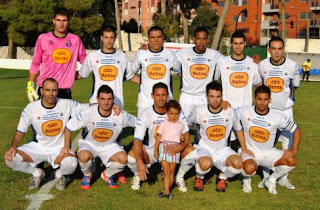 |
| Celtic seasons wheel |
Tomorrow is Halloween,
or Samhain as it was called in the time of the Celts.
At ECI most of our classes tomorrow will have a "Halloween feel" and below is a reading class that may get used. Enjoy, but don't get too scared.........
The
Origins of Halloween
The
first time I knew there was something more to October 31st than
trick or treating and witches, was when I was a teenager. I was
reading the first chapters of Thomas Hardy's "The Return of the Native”. In this book the residents of England's “Egdon Heath” celebrated the night with giant bonfires
built on hilltops.
For
the last 20 years or so I have been studying the ancient traditions and customs
practiced by the Celts of Scotland and Ireland.
I learnt that Celtic Halloween, or Samhain, pronounced SOW-en or SOW-in,
is from the Old Irish language. The word means "summer's end", the
end of the light half of the year and the beginning of the dark half.
The
more I read, the more I learned that the Romans, the Catholic Church and
commercialized modern society reinvented this festival for their own purposes.
But traces of Halloween's ancestral past
remains tucked inside the modern celebrations.
For
the Celts, Samhain was one of the two most important days of the Celtic
year. It marked the beginning of winter, which they celebrated as their New
Year, November 1st being their New Year's Day. As with all Celtic
holidays, the eve before is when the celebrations took place, because
the Celtic "day" began at night. This night was a time when the
laws of time and space are temporarily suspended. It was said that during
Samhain, the veil between this world and the afterlife was especially thin or lifted entirely.
The
Celts felt that during this time they were privy to supernatural
and otherworldly knowledge. It was a world filled with the forces of magic, a
night of mystical glory. It was referred to as "Time Which Is No
Time". It was very magical, but also very dangerous.
An
important part of Samhain was the lighting of giant bonfires on hilltops. These
bonfires were full of symbolism. They gave the Celts a festive feeling and a
sense of warmth. Bonfires were wonderful gathering places for storytelling,
chanting and singing, and it was considered good luck to jump over the bonfire
as it died down. Hilltop fires also mirrored the light, warmth and colour
of the sun in the sky.
Family hearth fires were extinguished and then re-lit from the
sacred communal fires. These huge bonfires were thought to consume all the
miseries of the past year. They were also used to secure a promise from the sun
god not to disappear altogether during the cold months ahead. The Celts hoped
that the tall bonfires would rise high enough to reach the tired sun, fully rejuvenating him.
In
England and Scotland, Samhain marked the final harvest
of the year, and it was a time for herding the cattle from their summer
pastures. Sometimes two bonfires would be built close together and people would
drive their cows and other livestock between the fires as a cleansing ritual
for all.
To
protect themselves from mischievous spirits, the Celts would dress in
frightening disguises so that the spirits would mistake them for one of their own and pass them by. They would also parade
around and make loud noises to drive unwanted spirits to the edge of the
community.
Vocabulary
|
English
|
Spanish
|
English
|
Spanish
|
|
Residents
|
Residentes
|
Rejuvenating
|
Rejuvenecedor
|
|
Bonfire
|
Hoguera
|
Harvest
|
Cosechar
|
|
Tucked
|
Escondido
|
Veil
|
Velo
|
|
Afterlife
|
En la más alta
|
One of their own
|
Uno de ellos
|
|
Privy
|
Conocimiento privado
|
Parade
|
desfile
|







.jpg)
























